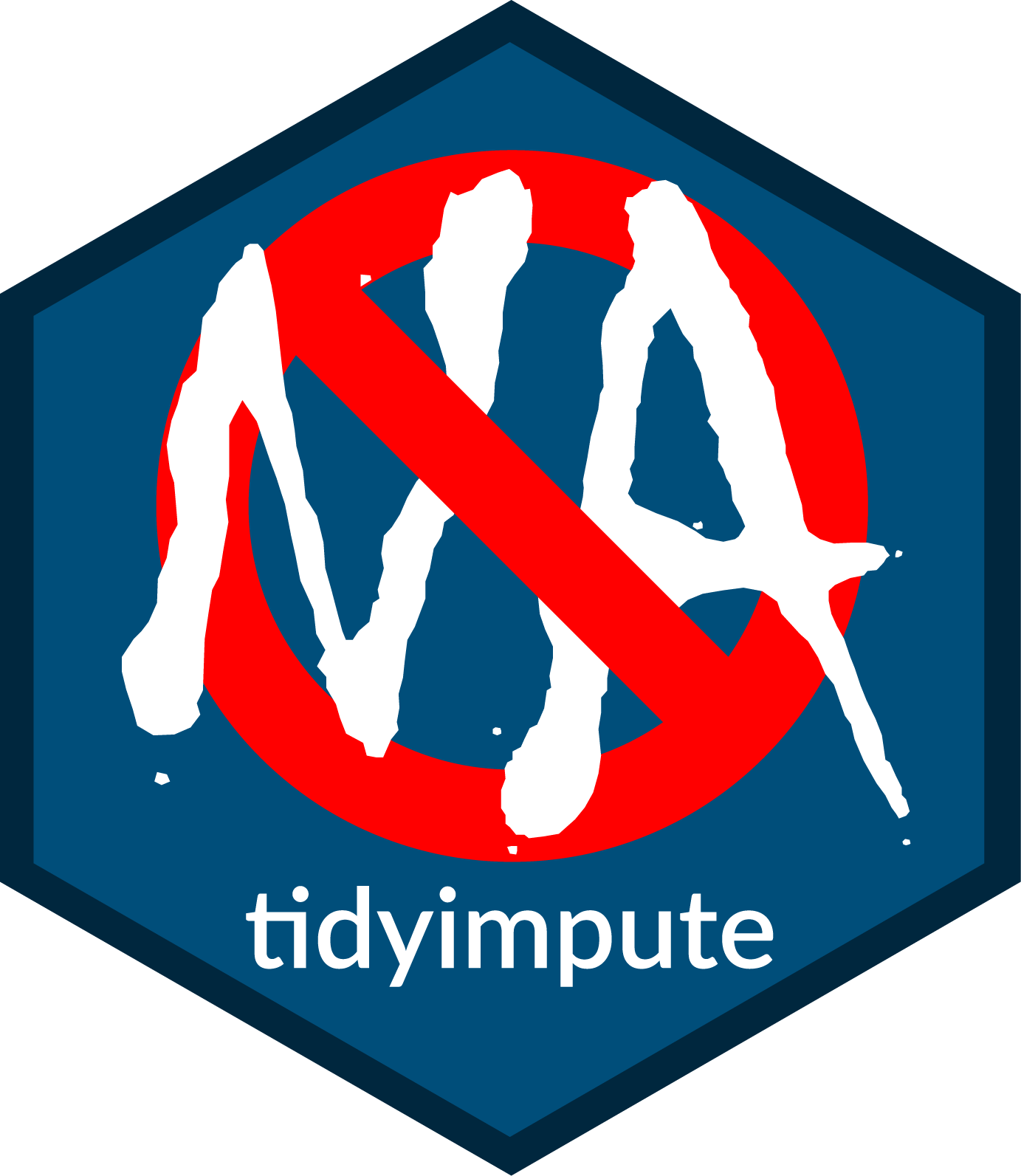tidyimpute 
Impute the tidyverse way
tidyimpute is tidtverse/dplyr compliant toolkit for imputing missing
values (NA) values in list-like and table-like structures including data.tables.
It had two goals: 1) extend existing na.* functions from the stats packages
and 2) provide dplyr/tidyverse compliant methods for tables and lists.
This package is based on the handy na.tools package which provides tools for working with missing values in vectors.
Feature List
- Over 80 functions for imputi missing values (See [#Function List] below.)
- dplyr/tidyverse compliant inteface:
impute_*family of functions for table- or list-based imputations.impute_*_at,impute_*_allandimpute_*_iffunctions
- Uses the *na.tools package to ensure
- Type/class and length-safe replacement. (tidyimport will never change produce an object with a different length/nrow or type/class of its target.)
- General imputation methods
- Generic imputation:
impute,impute_at,impute_all,impute_if
- Generic imputation:
- Specialized imputation methods
- Common imputations for:
- constants:
0,-Inf,Inf - univariate, commutative summary functions:
mean,median,max,min,zero - (Coming Soon) univariate, non-commutive/ordered/time-series data:
loess,locf,locb - (Coming Soon) model-based imputation
- constants:
- Support for recursive (lists and table-like structures)
- Support for
tibble - Support for
data.table
- Common imputations for:
- Four extensible types of imputations
Upcoming features
- recall/track which values have been replaced
by-groupcalculations- Time-series/ordered/non-commutative methods
- Model-based imputation
- Model-based + by-groups
Installation
Github (Development Version)
library(devtools)
install_github( "decisionpatterns/tidyimport")
CRAN
R> install.packages("tidyimpute")
Coming Soon ...
- Impute by model
- Memorable imputing
Function List
There are four types of imputation methods. They are distinguished by how the replacement values are calculated. Each is described below as well as describing each of the methods used.
Constants
In "constant" imputation methods, missing values are replaced by an
a priori selected constant value. The vector containingmissing values
is not used to calculate the replacement value. These take the form: na.fun(x, ...)
impute_zero- 0impute_inf/impute_neginf- Inf/-Infimpute_constant- Impute with a constant
Univariate
(Impute using function(s) of the target variable; When imputing in a table this is also called column-based imputation since the values used to derive the imputed come from the single column alone.)
In "univariate" replacement methods, values are calculated using
only the target vector, ie the one containing the missing values. The functions
for performing the imputation are nominally univariate summary functions.
Generally, the ordering of the vector does not affect imputed values. In general,
one value is used to replace all missing values (NA) for a variable.
impute_max- maximumimpute_minimum- minumumimpute_mean- meanimpute_median- median valueimpute_quantile- quantile valueimpute_sample- randomly sampled value via bootstrap.
Ordered Univariate (Coming Soon)
(Impute using function(s) of the target variable. Variable ordering relevant. This is a super class of the previous column-based imputation.)
In "ordered univariate" methods, replacement valuse are calculated from the vector that is assumed to be ordered. These types are very often used with time-series data. (Many of these functions are taken from or patterned after functions in the zoo package.)
impute_loess- loess smoother, assumes values are orderedimpute_locf- last observation carried forward, assumes orderedimpute_nocb- next observation carried backwards, assumes ordered
Multivariate (Coming Soon)
(Impute with multiple variables from the same observation. In tables, this is also called row-based imputation because imputed values derive from other measurement for the same observation. )
In "Multivariate" imputation, any value from the same row (observation) can be
used to derive the replacement value. This is generally implemented as a model
traing from the data with var ~ ...
impute_fit,impute_predict- use a modelimpute_by_group- use by-group imputation
Generalized (Coming Soon)
(Impute with column and rows.)
Future:
unimpute/impute_restore- restore NAs to the vector; remembering replacementimpute_toggle- toggle betweenNAand replacement values
Examples
tbl <- data.frame( col_1 = letters[1:3], col_2=c(1,NA_real_,3), col_3=3:1)
impute( tbl, 2)
impute_mean( tbl )


